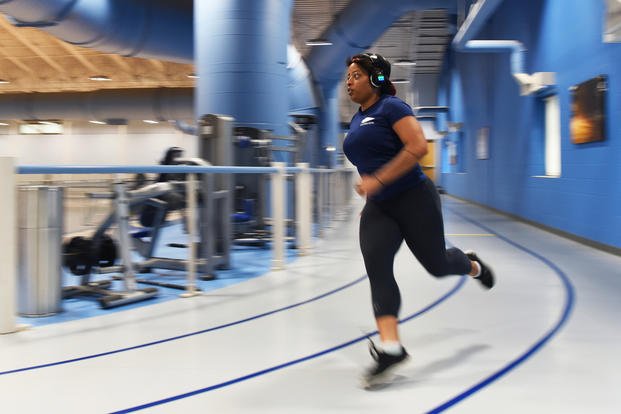Do you want to start your very first fitness routine or pick one up after years of inactivity? Maybe you want to get started on a plan but need some direction? Were you once very fit, but have fallen off the wagon and think about putting old workout plans to use? Remember what you "used to do"?
Whether you are just beginning an exercise routine for the first time or you were a PT animal in your teens and 20s, I always recommend that folks getting started or returning go easy and progress logically. Too many people start off with workouts that are way too hard for their level of fitness.
The advice in this article will demonstrate some workout progressions in stretching, basic calisthenics, walking, running, other cardio forms and some recommended dos and don'ts. Give yourself a few months of easy-paced programming to get back to moving again, especially if it has been a few years (or more) since you exercised.
Back to Basics
Any first timer to fitness training needs to start off easy -- same for the veteran who needs to get rolling again. The biggest mistake for both types of fitness program starters is that they do too much, too soon for too long, then burn out or get injured.
Stretching, Core, Lower-Back Exercises, Flexibility
It is never a bad idea to start or end the day with a warmup walk or bike ride, followed by some very basic calisthenics that work and stretch the stomach, upper and lower back, and shoulder girdle. When you hear people talk about working their core, it is not just the abdominals that are exercised. The core includes your spine and all that connects to it from the shoulders to the hips.
Mixing Basic Calisthenics, Some Weights and Cardio into a Plan
The 45-Day Plan has been a way to get started for many true beginners for years. It contains information on stretching and basic calisthenics, like push-ups, crunches, plank poses, squats and lunges. Some lightweight dumbbells will be required for working the joints with minimal resistance.
You can adapt this plan by using rubber bands, too. Also, you can alter the repetitions and exercises to better fit your fitness levels as needed. I have seen people use this plan and lose 20 pounds in 45 days by simply following the Lean-Down Plan and adding more drinking water to their day.
This is a free plan -- no tricks. Just a workout and simple nutrition guide to help you transition from inactive to active.
When it Comes to Walking and Running
Rule #1: If you walk, try running (mixed with walking).
Rule #2: If you don't walk much, do not start running. Start walking.
Rule #3: Increase your time and run or walk distance by 10%-15% each week.
Rule #4: If you are very overweight (40+ pounds), running or walking may be painful. Walk if you don't feel pain, but you also should consider non-impact cardio options, like biking, an elliptical glider, rowing and swimming, to help you lose weight and start the fitness process.
Here is a sample beginner running, walking, non-impact cardio plan to get started every other day (roughly three days a week).
|
Week 1 |
Walk 20-30 minutes/stretching entire body daily (monitor weight loss*) |
|
Week 2 |
Run 1:00/Walk 1-2:00 for 20-30 minutes |
|
Week 3 |
Run 1:00/Walk 1:00 for 30 minutes (listen to your body as injuries occur this week**) |
|
Week 4 |
3 Sets of Run 1:30/Walk 1:30 | 3 Sets of Run 2:00/Walk 1:00 |
|
Week 5 |
3 Sets of Run 2:30/Walk 1:00 | 3 Sets of Run 2:00/Walk 30 seconds |
|
Week 6 |
4 Sets of Run 3:00/Walk 1:30 |
|
Week 7 |
Run 1 mile/try nonstop/walk 1 mile fast |
|
Week 8 |
Run/walk combo 2.5 miles (from weeks 8-10, try to run as much as you can) |
|
Week 9 |
Run/walk combo 2.75 miles |
|
Week10 |
Run/walk combo 3 miles |
|
Option |
Walk 10-15 minutes after every meal as additional training. Just easy walking. |
After several weeks following this plan, you probably will feel like you can run faster, farther and more often. If you are not overweight at this point, play around with the distances to suit your fitness abilities, but listen to your body and these final rules on running:
Rule #5: If it hurts to run, stop running.
Rule #6: If it hurts to walk, don't run.
Rule #7: If it hurts at rest (sitting, etc.), go to a doctor.
Share this article with friends and family that need to start a plan, either for their health and well-being or as a ramp to go back to high levels of fitness. Just because you have not done any physical activity in 20 years does not mean you cannot start. Start today.
Stew Smith is a former Navy SEAL and fitness author certified as a Strength and Conditioning Specialist (CSCS) with the National Strength and Conditioning Association. Visit his Fitness eBook store if you're looking to start a workout program to create a healthy lifestyle. Send your fitness questions to stew@stewsmith.com.
Want to Learn More About Military Life?
Whether you're thinking of joining the military, looking for fitness and basic training tips, or keeping up with military life and benefits, Military.com has you covered. Subscribe to Military.com to have military news, updates and resources delivered directly to your inbox.



















